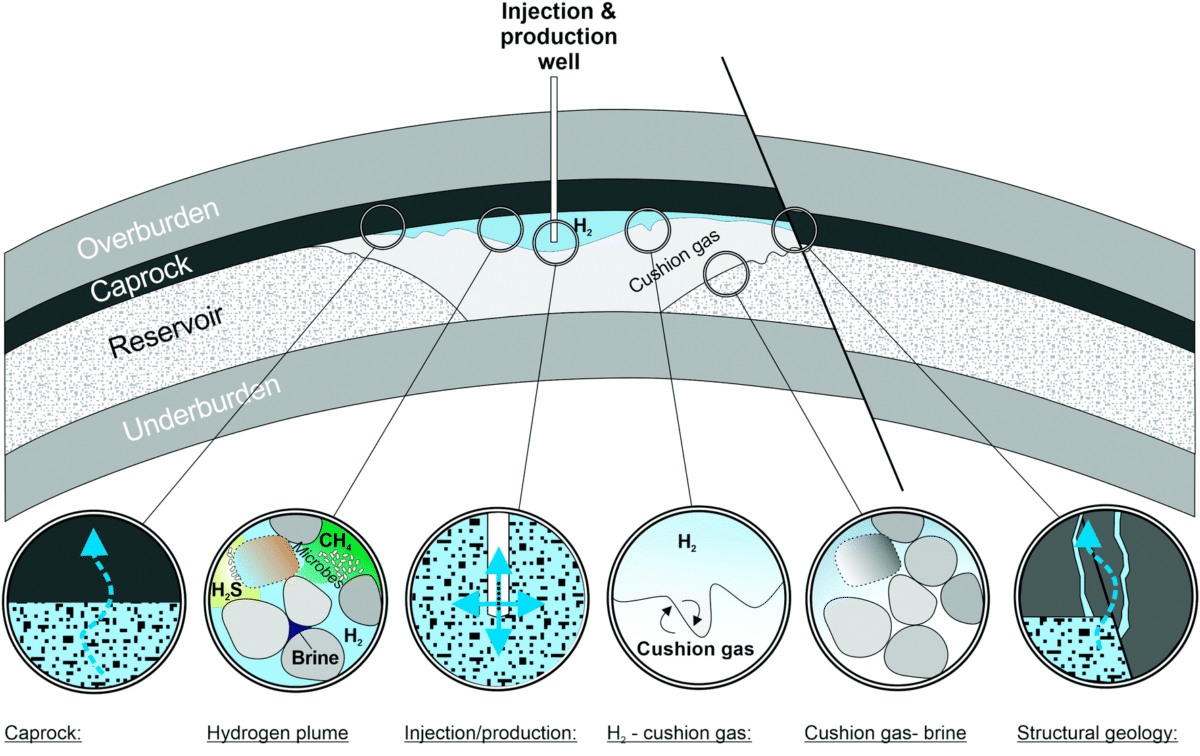The underground storage of hydrogen has been pointed out by recent research as a feasible solution to contribute to the creation of a hydrogen economy in several world regions. According to a group of international scientists, however, several challenges and knowledge gaps must be addressed to fully unleash the strong potential that this storage technology is promising.
In the study Enabling large-scale hydrogen storage in porous media – the scientific challenges, published in Energy & Environmental Science, the academics, which are all part of the GEO 8 association of European geoscientific research organizations, stressed that there is an urgent need for implementing interdisciplinary research to make the development of underground hydrogen storage safe and efficient.
According to them, there is limited experience with underground hydrogen storage in porous geological formations to date and similar solutions have only been applied in small scale projects for town gas storage in France, Czechia, and Germany. Although some knowledge and good practices may be taken from underground storage of natural gas (UGS), compressed air (CAES), and CO2 subsurface storage (UCS), there are several unique issues that should be considered when it comes to hydrogen.
“Firstly, hydrogen has very different physical and chemical properties compared to other geologically stored fluids, such as CH4, air or CO2“, the research group explained. “Secondly, hydrogen may react with the subsurface minerals and fluids, potentially affecting the storage operations.” Furthermore, hydrogen may be responsible for the growth of hydrogen consuming microbes in the subsurface, and hydrogen containment may be compromised by the stress produced by repeated injection-reproduction cycles.
Specific characterization of the storage sites is needed in order to ensure safe and economic hydrogen injection and reproduction. “Uncertainties related to potential leakage, as well as other risks such as induced seismicity and the loss of hydrogen due to microbial activity need to be investigated and quantified, and new monitoring programs require investigation and calibration,” the group emphasized. “This perspective outlines the scientific challenges of hydrogen storage in deep saline aquifers and depleted hydrocarbon fields, in order to spark a discussion within the multidisciplinary energy research community.”
The main challenges associated with this technology relate to the fluid flow behavior of hydrogen in subsurface reservoirs, geochemical reactions caused by hydrogen injection, biotic reactions caused by excess hydrogen, and the geomechanical response of the subsurface to hydrogen storage.
Previous studies on the matter have shown the potential for large scale seasonal underground hydrogen storage (UHS) in geological formations in Canada, and that of hydrogen storage in salt caverns. The best locations for UHS are salt caverns, deep saline aquifers, depleted oil and gas deposits, and lined or unlined rock caverns.
This content is protected by copyright and may not be reused. If you want to cooperate with us and would like to reuse some of our content, please contact: editors@pv-magazine.com.




By submitting this form you agree to pv magazine using your data for the purposes of publishing your comment.
Your personal data will only be disclosed or otherwise transmitted to third parties for the purposes of spam filtering or if this is necessary for technical maintenance of the website. Any other transfer to third parties will not take place unless this is justified on the basis of applicable data protection regulations or if pv magazine is legally obliged to do so.
You may revoke this consent at any time with effect for the future, in which case your personal data will be deleted immediately. Otherwise, your data will be deleted if pv magazine has processed your request or the purpose of data storage is fulfilled.
Further information on data privacy can be found in our Data Protection Policy.